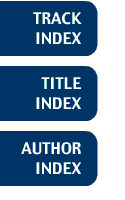
Track: Ecology, Conservation, and Archaeology
A GIS Protocol for Biodiversity Hot Spots
Peter AugustHabitat loss is the single-most significant cause for the loss of local biodiversity. The legal authority to convert natural habitat to developed land occurs at the scale of the individual land parcel. The arena for these decisions is the town hall. Town zoning law dictates how land can be developed. Aquifers, wetlands, and locations of regulated species are (or can be) clearly mapped and therefore included in zoning regulations. Regions critical to support biodiversity are usually not mapped and are rarely (if ever) included in land use regulations. In theory, zoning regulations should reflect the need to protect critical natural resources such as groundwater, wetlands, rare and endangered species, and overall biodiversity. We have developed a simple protocol to estimate lands critical to support regional biodiversity using off-the-shelf GIS data. The ultimate product of our analysis is a map showing general regions of high importance in support of biodiversity. Our "mapematical" definition of biodiversity includes data on wetlands, habitat for rare species, natural land covers, large tracts of forest, sources of disturbance (roads, residential areas), and lands adjacent to protected areas and critical habitats. We will illustrate our process using the towns of Narragansett, West Greenwich, and South Kingstown, Rhode Island, as examples.
Peter August
University of Rhode Island
Kingston, RI
USA
Telephone: (401) 874-4794
Fax: (401) 874-4561
E-mail: pete@edc.uri.edu